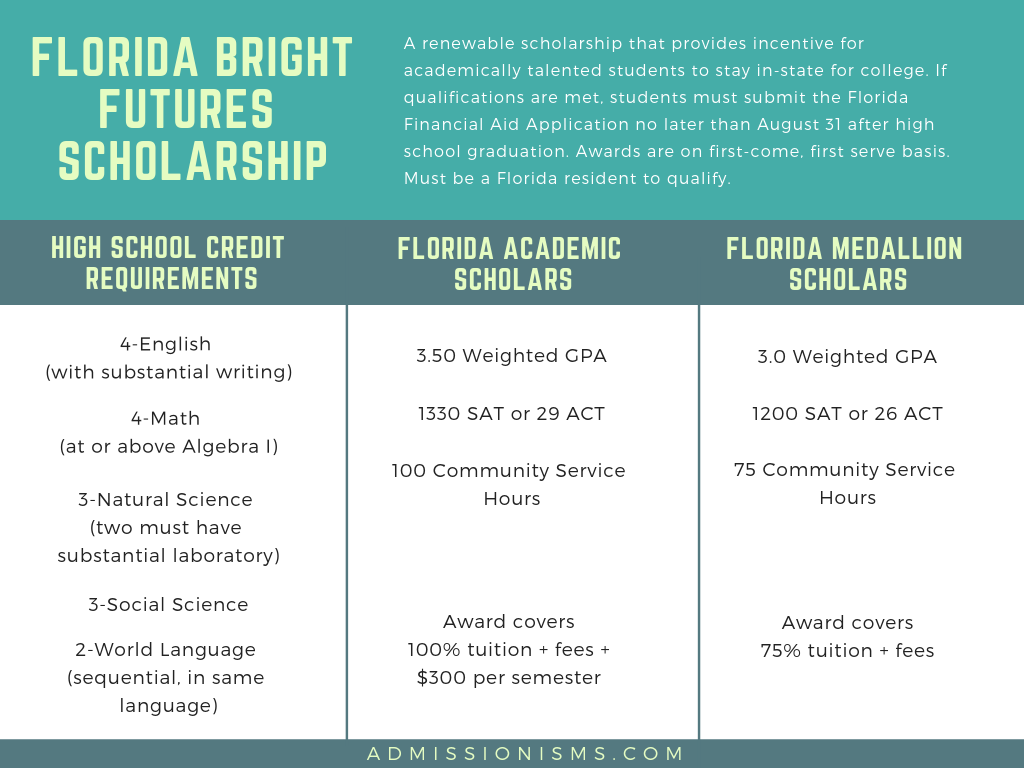
One thing I try to impress upon families: Year by year, there are changes on the college admissions landscape. Earlier this year, there were 2 major changes put into effect that may cause ripple effects in college acceptances and who receives tuition-based scholarships for Floridian students.
SAT Rolls Out An Adversity Score
The College Board, the parent company that brings us the SAT, announced new changes that are intended to add environmental and social context for colleges to consider when looking at students’ SAT scores.
As an example, you may have students Michael and Robert who both scored 1300 on their SAT tests. The additional SAT adversity score, which will reportedly be used widely starting in 2020, will consider factors such as poverty, food stamp eligibility, neighborhood crime rates, etc., to provide more context to interpret their scores. It will not affect the SAT score itself
As an example, because Robert was raised in an impoverished family, his neighborhood has high crime rates and historically “failing” schools, his SAT score of 1300 + a high adversity score indicates that he’s young man with poor access to resources – such as better schools or costly test prep – who has scored relatively well in context to similarly situated peers. (Just based on my understanding of how it will work – of course, there are many other factors that go into college admissions decisions).
Student’s adversity scores will be unknown to them, but the colleges that Michael and Robert apply to will have access to it.
David Coleman, CEO of the College Board, has said about the SAT adversity score: “This is about finding people who do a great deal with what they’ve been given. It helps colleges see students who may not have scored as high, but when you look at the environment that they have emerged from, it is amazing.”
Some have praised the SAT changes as an alternative to using race as a factor in college admission. Apparently, the SAT with adversity score index has been piloted at over 50 colleges already, and some college admissions official reported that its inclusion was helpful, resulting in some cases with a disadvantaged student admitted that perhaps would not have been without the additional contextual information.
The jury is out about how this change will affect college admissions across the board once the SAT adversity score is distributed to colleges more widely. If it affects anything at all. Colleges are not required to do anything with the additional contextual information.
Florida Bright Futures Scholarship Changes
The Florida Bright Futures Scholarship is a wonderful gift for the sake of college affordability that pays for either 75% or 100% of tuition costs to in-state colleges.
The Florida Legislature voted in May 2019 to raise the SAT score cutoffs to earn the Bright Futures Scholarship. ACT score cutoffs will remain unchanged. Increases to SAT score minimums comes in part from a change that the College Board announced in 2016; there would no longer be a quarter-point penalty for wrong answers, in which average SAT scores rose as a result. These changes would begin with the graduating class of 2021 and beyond.
Here’s what eligibility looks like under the new changes:

For perspective, the SAT scores for the Florida Medallion Scholars was raised from 1170 to 1200. The SAT scores for the Florida Academic Scholars was raised from 1290 to 1330.
While it may seem like a modest SAT score cutoff increase, there will be thousands of students who no longer meet eligibility for the Bright Futures Scholarship program, and there is concern that many low-income or minority students will be shut out.
Again, the jury is out about the impact, as the changes have not yet been realized. Regardless, families should be made aware of the changes and the current benchmarks for achieving these scholarships, which represent tens of thousands of dollars saved on college tuition per year.
 Common App Is Open: What’s Next? | Getting Started With Common App
Common App Is Open: What’s Next? | Getting Started With Common App The Art of College List Building
The Art of College List Building YouScience Career Assessments: Student Reviews Are In
YouScience Career Assessments: Student Reviews Are In All About Transfers: Community College to University
All About Transfers: Community College to University